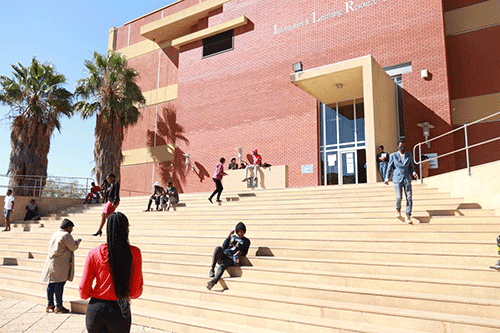Attempts by the Namibia Students Financial Assistance Fund to collect debt from beneficiaries remain a challenge as only N$44.9 million has been recovered between the 2015 and 2022 financial years.
The entity receives around N$1 billion per annum from government, with the number of students applying for funding increasing every year. Last year, over 23 000 applied, but the institution approved payments to only 16 185 applicants.
Acting CEO Kennedy Kandume earlier this year said the fund hopes for an increased budget, to N$1.6 billion, to cater for the expected increasing number of applicants during the 2022 academic year.
However, the fund was only allocated N$1.4 billion.
In an interview with New Era on the issue of debt collection, NSFAF spokesperson Olavi Hamwele said the low recovery rate experienced during the last five financial years is mainly attributed to the high unemployment rate in the country.
Namibia’s youth unemployment is estimated by the United Nations to be 50%.
The other reason is the high cost of living.
According to the World Bank, 200 000 Namibians were pushed into poverty during the first year of the Covid-19 pandemic, with 1.6 million Namibians now living in poverty.
“Most debtors are unable to pay back their loans due to low disposable income, as well as the slowdown in economic growth in the country due to the economic recession experienced in the last three years,” Hamwele noted.
The Covid-19 pandemic also negatively impacted many livelihoods, coupled with widespread job losses in the country.
In January this year, the Ministry of Labour, Industrial Relations and Employment-Creation stated that 1 278 employers let 15 442 workers go over the last two years.
In 2020 alone, 12 198 workers from 896 companies lost their jobs. Last year, a total of 3 244 employees were laid off.
Various institutions estimate that around 67 000 Namibian graduates are unemployed.
The other issue Hamwele cited is the lack of an NSFAF integrated system with the institutions of higher learning to promptly identify the graduates and flag them as matured loans.
In the meantime, the fund is implementing some mitigation measures to improve the recovery rate and enhance collection efficiency.
These include proposing amendments to the NSFAF Act, to classify a student’s loan repayment as a statutory deduction, as well as fostering a relationship with key stakeholders and employers to improve the recovery rate.
The fund is likewise in the process of developing a comprehensive recovery strategy which would include vigorous loan repayment campaigns, SMSes and messages reminding the defaulters of their repayment obligations, demand letters, as well as blacklisting and litigation of defaulters.
Last year, the institution threatened to name and shame 52 000 defaulters who owe the institution more than N$2.6 billion.
The NSFAF was established in 2000 through Act 26 of 2000 to provide funding to qualifying students to access tertiary education at institutions of higher learning in Namibia and abroad.
In May 2013, the NSFAF was moved from the ministry of education to become a stand-alone public-owned enterprise, and continued to issue loans and grants in accordance with the provisions of the NSFAF Act.
Since then, the fund has been operating as an independent public enterprise within the provisions of the Public Enterprises Governance Act (PEGA), 2019 (Act No. 1 of 2019), under the line Ministry of Higher Education, Technology and Innovation.
The primary objective of the fund is to provide financial assistance to enable students to study or do research, and more specifically to facilitate the training of students in prescribed courses at approved institutions of higher learning.
Furthermore, it is to contribute to the development of Namibia’s human capital by providing eligible Namibians with financial assistance to access vocational and higher education and training. Such financial assistance is provided through loans, grants and scholarships.


